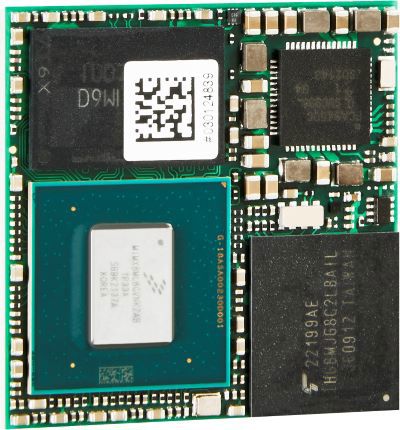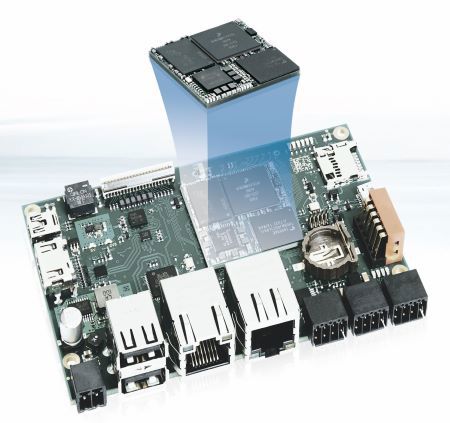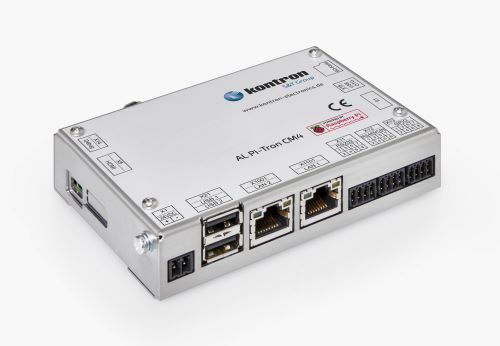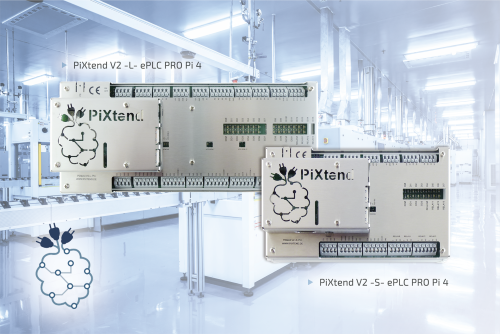Industrial automation imposes distinct requirements on machine and system hardware. In response, Kontron has developed an extensive array of proprietary products that use Arm processor technology, accessible in a broad portfolio that spans NXP processors and devices from the Raspberry Pi Foundation.
Teamed with the accessibility of the IEC 61131-3 automation software CODESYS, Kontron has developed a scalable modular system that provides what the company describes as a “robust and forward-looking foundation for the construction of controllers and edge gateways”.
Industrial automation imposes differentiated requirements on the equipment of machines and systems with regard to the appropriate hardware. There are several tasks for which processors such as Intel's Core iX or Atom would have been good to deploy but are economically not feasible.
Technologies for every application
As a manufacturer of industrial computer hardware, Kontron is able to offer single board computers, computer-on-modules and industrial PCs with some of the most powerful processors and peripheral semiconductors available.
Using microcontrollers and Arm-based microprocessors, Kontron as provider of IoT/Embedded Computer Technology (ECT) is able to create a range of diverse solutions for industrial applications. These meet a wide variety of requirements, not only in terms of processors, but also integration into devices, machines and systems.
With Kontron Electronics, the company has a division that specialises in the development and production of cost-optimised solutions. Kontron Electronics is a full-service provider for electronic assemblies and devices and it is part of the Kontron ODM/EMS Alliance consisting of five companies with seven locations spread across Germany, Austria, Hungary and Slovenia.
The group of companies has decades of experience in the complete manufacturing chain and broad expertise in developing products to meet a wide range of requirements.

Figure 1: Kontron Electronics specialises in cost-optimised solutions and can offer both its own and customer-specific products. (Credit: Kontron)
Scalable hardware
Before turning to the actual processors, what are the products that are ‘driven’ by them? Kontron Electronics develops and produces assemblies for a huge range of applications. For the most part, 32-bit microcontrollers of the STM32 type with the Arm Cortex-M core operate in predominantly customised products.
"Based on Arm processor technology, we have developed a scalable modular system with a broad portfolio of proprietary products," explained Holger Wußmann, Kontron Electronics’ Managing Director. "These are not only applicable for numerous use cases but are also suitable as a starting point for cost-optimised and customised developments."
The core of this matrix-like product portfolio is formed by the processor modules called System-on-Modules (SoM). In addition to existing modules in a proprietary 25.5 x 25.5 mm form factor, new modules are designed to conform to the Open Standard Module specification, which is a new vendor-neutral standard for soldered SoMs that reduces the overall cost of a solution compared to pluggable designs.
Integration as standard
For customers who do not integrate these SoM themselves or use them on custom-developed carrier platforms, Kontron can offer extremely compact computer boards including peripherals under the name Board-Line.
These boards feature a uniform size and placement of the connectors.
"This means that customers can be sure that suitable functionally equivalent modules will still be available many years from now," said Wußmann. "Together with the fact that Kontron Electronics manufactures SOMs for as long as the respective manufacturer supplies the processors used, gives the systems in which such products are integrated a high degree of future security."
Due to their standardised dimensions, the Board-Line products are suitable for installation in a uniform housing. In fact, Kontron offers these products in its Automation-Line in DIN rail-mountable metal enclosures. In this way, the board products become small box PCs with dimensions of 111 x 25 x 76 mm. Most of the boards and modules are also available in the Display-Line in the form of touch panels with 5", 7", 10" and 15.6" screen diagonals.
As a result, everything is available to make the rapid realisation of automation projects easy, from the level of processor modules and boards to the finished products themselves.

Figure 2: Kontron offers hardware products in the form of PCBs consisting of MPUs, System-on-Module (SoM), memory, communication and LCD interface. (Credit: Kontron)
Processor technology
With regard to the processors used, Kontron maintains close partnerships with leading semiconductor manufacturers which puts it in a great position to be able to launch innovative and scalable products in industrial-grade designs for embedded computing/IIoT using the latest processors the instant a new generation becomes available.
"The selection criteria for processors are manifold," explained Wußmann. "Complex HTML visualisation requires a powerful GPU, for AI tasks we offer add-on modules with AI accelerator chips."
Power and peripherals
Available as an OSM module based on the i.MX8M Mini Quad Core application processor, the SoMs feature exceptional performance data for their size class. In addition to a powerful 4x Arm Cortex-A53 microprocessor with 1.6 GHz clock frequency and DDR4 memory, the system offers a standard peripheral set with a wide range of interfaces.
Numerous digital I/Os and serial communication interfaces, a DSI interface as well as PWM and two SDIO interfaces, means that the module can address demanding automation tasks, real-time applications and high-quality visualisation solutions.
As the latest addition to its portfolio, Kontron presented the world's first SoM in the Size S form factor (30x30 mm) based on the iMX8Mplus at the embedded world Exhibition & Conference in March 2023. It supports dual GbE-Lan and TSN. With its communication capabilities, this module is tailored to the industrial requirements for hard real-time capability.

Figure 3: All Board-Line products are available with the current i.MX 8 series processors from NXP or Raspberry Pi 4. (Credit: Kontron)
The Raspberry is well established
Initially coming from schools and universities, the Raspberry Pi, also based on Arm technology, is now widely used in industrial applications.
"In particular, the wide availability of free software and the experience already available from education is prompting young developers in particular to rely on this processor platform in industrial applications," said Wußmann. "Reason enough for us to offer suitable industrial solutions with the PiXtend and Pi-Tron hardware series."
Its success confirms that this step was the right one, according to Wußmann with 10,000 units of the PiXtend and Pi-Tron series products equipped with processor hardware from the Raspberry Pi Foundation having proven themselves in real-life operation.
Raspberry Pi is established in industrial application fields and is why Kontron has already integrated the current Compute Module 4.
The PiXtend Pi 4 PLC offers the Broadcom BCM2711, the most powerful processor from the Raspberry Pi Foundation. The quad-core processor with Arm Cortex-A72, 64-bit SoC supports up to 8 GB RAM. With a Gigabit Ethernet interface, the single-board computer ensures fast data transfer and offers two micro-HDMI ports for transferring audio and video data.
The Pi-Tron CM4 with the Broadcom BCM2711, 4x Arm Cortex-A72 with 1.5 GHz is also based on the fourth generation Raspberry Pi. The board can be equipped with significantly more RAM than its predecessor and also offers the option of a pre-certified WLAN/Bluetooth connection. For integrating the Pi-Tron CM4 into IoT applications, the use of LTE modules including SIM cards and external antenna connection is preset.

Figure 4: The PiXtend brand has been designed as PLCs from the outset, are available with Raspberry Pi 4 and suitable for programming using CODESYS. (Credit: Kontron)
Suitable for industrial control tasks
The usability of the manufacturer-independent IEC 61131-3 automation software CODESYS for Kontron's industrial-grade hardware products also applies to the Pi-Tron CM3+ and Pi-Tron CM4 as well as the PiXtend Pi3 and Pi4.
Their availability with a cost-efficient licence of the CODESYS Soft PLC enables users to conveniently deliver automation applications. The wide PLC function range of CODESYS also includes tested fieldbus protocols and so facilitates the use of these modules in automation.
These products can replace proprietary controllers, be used as edge gateways or take over building automation tasks.













